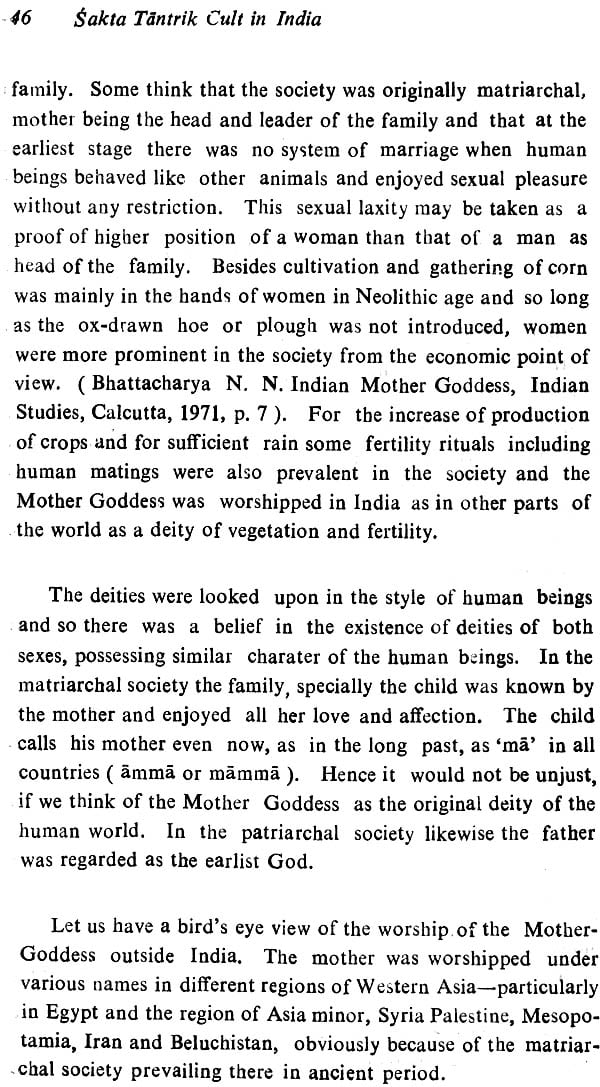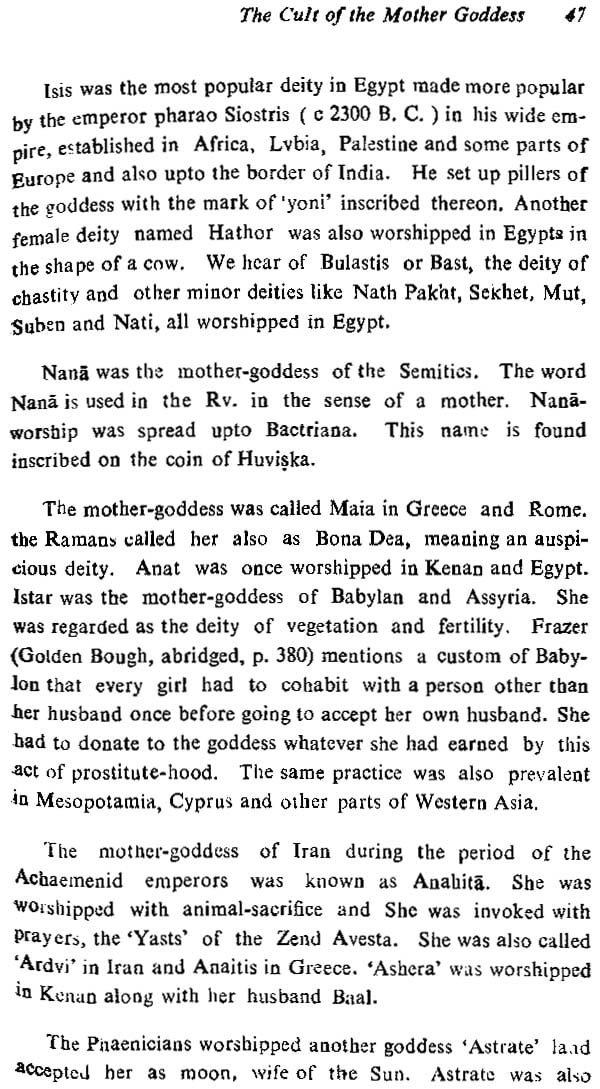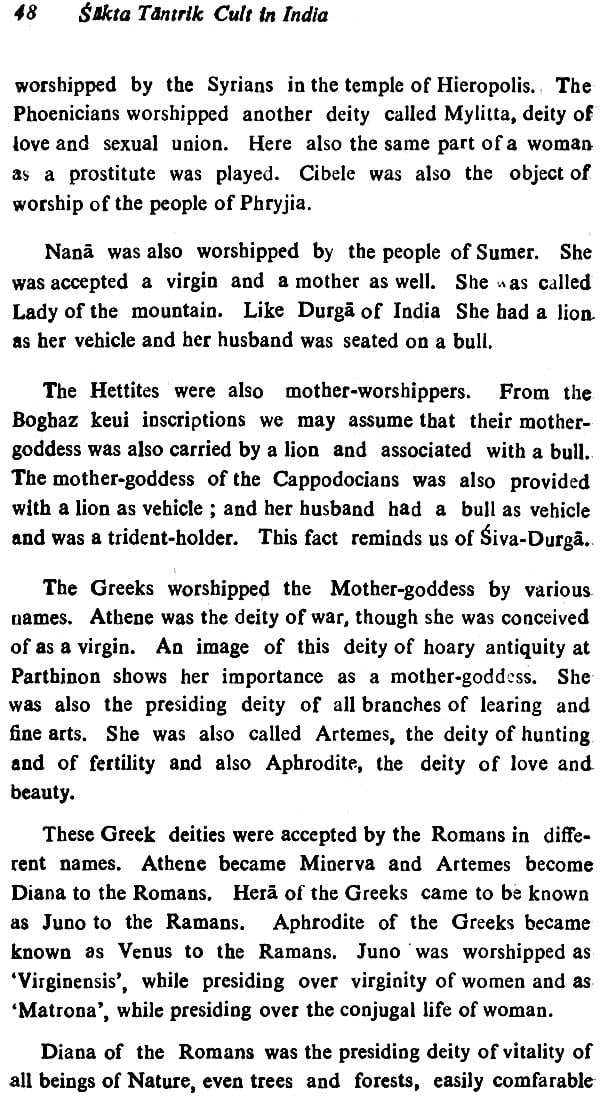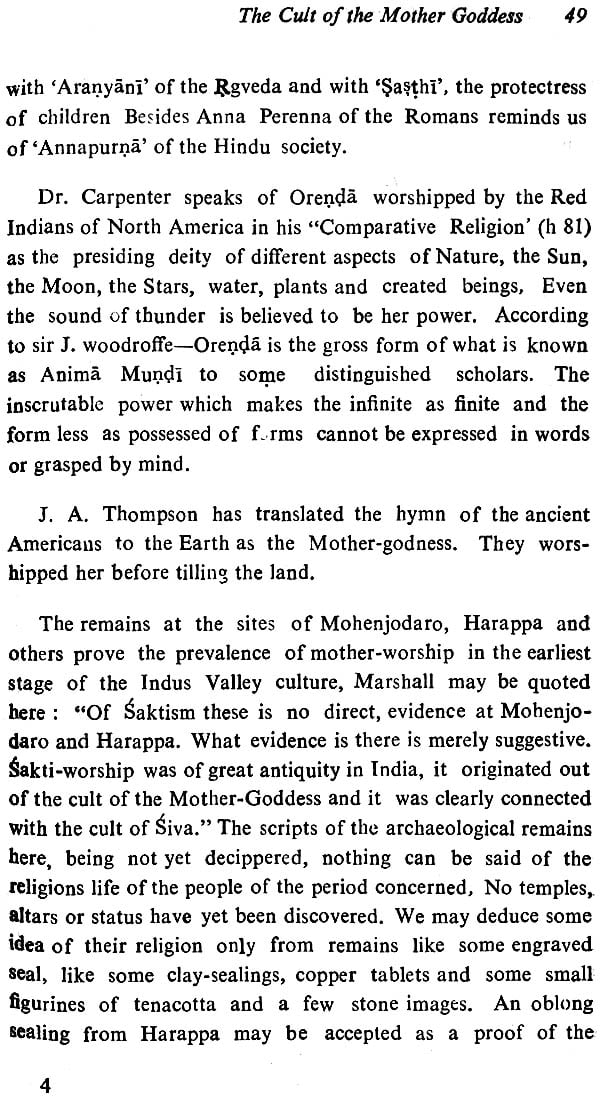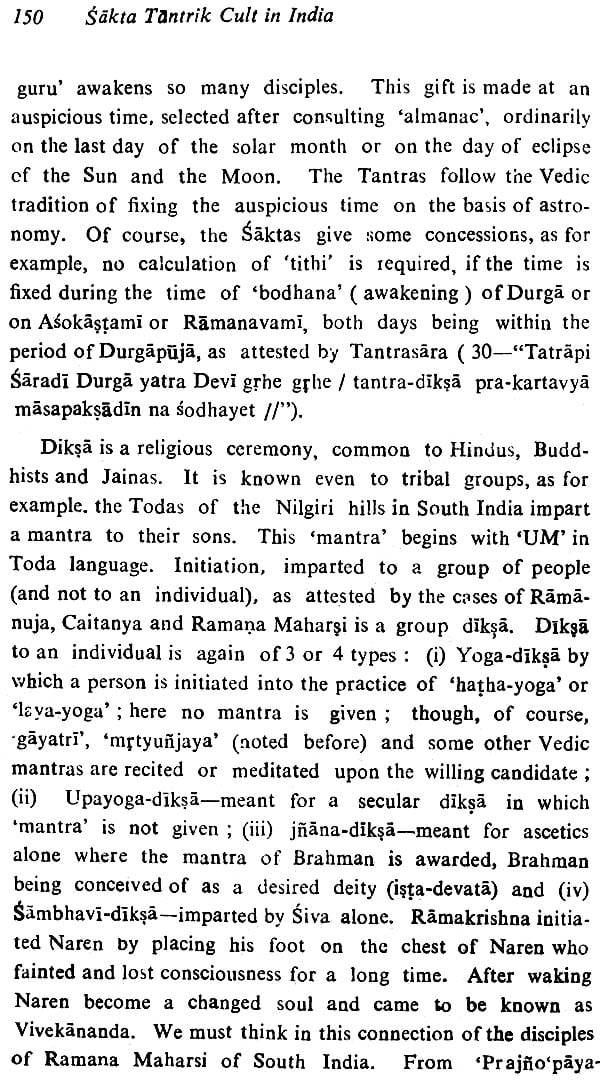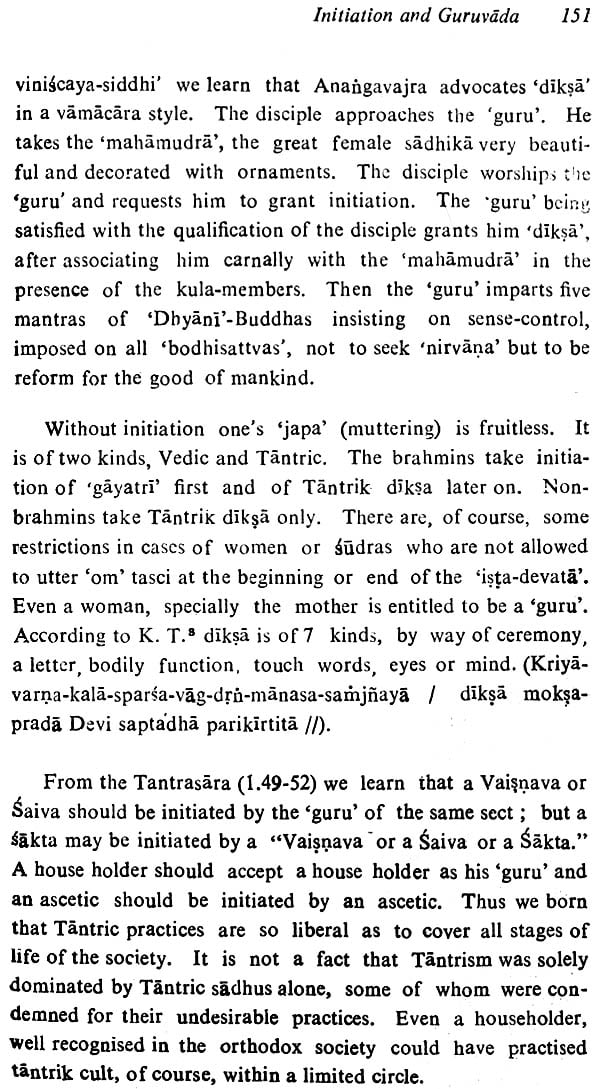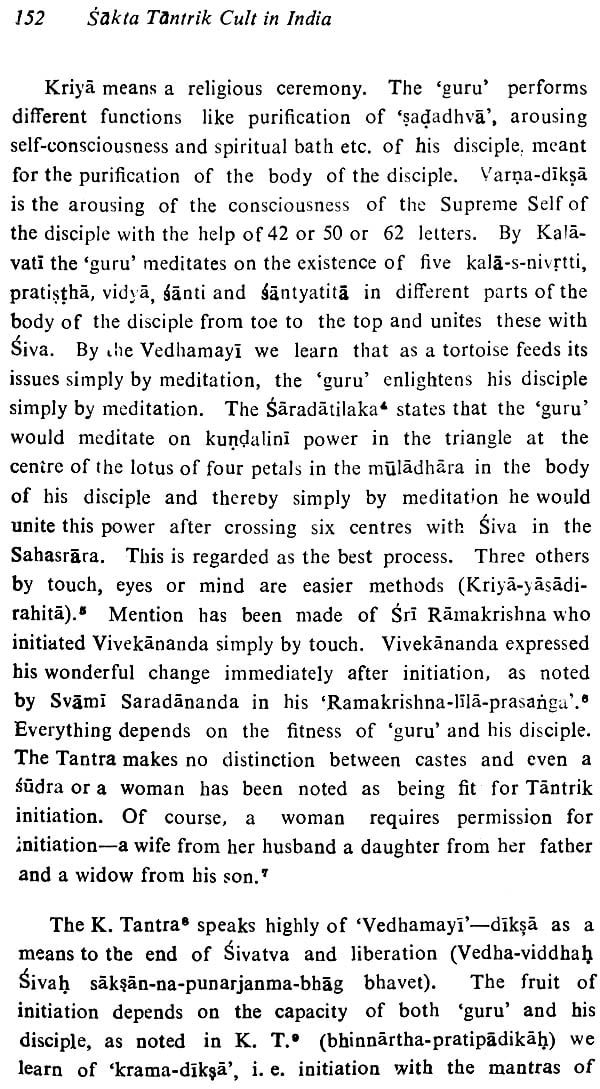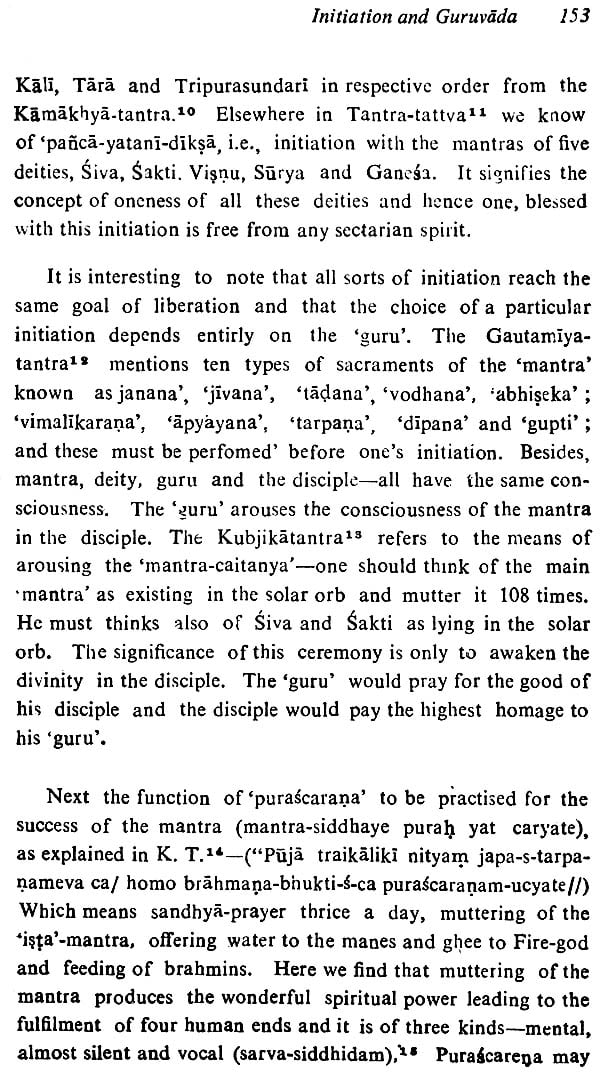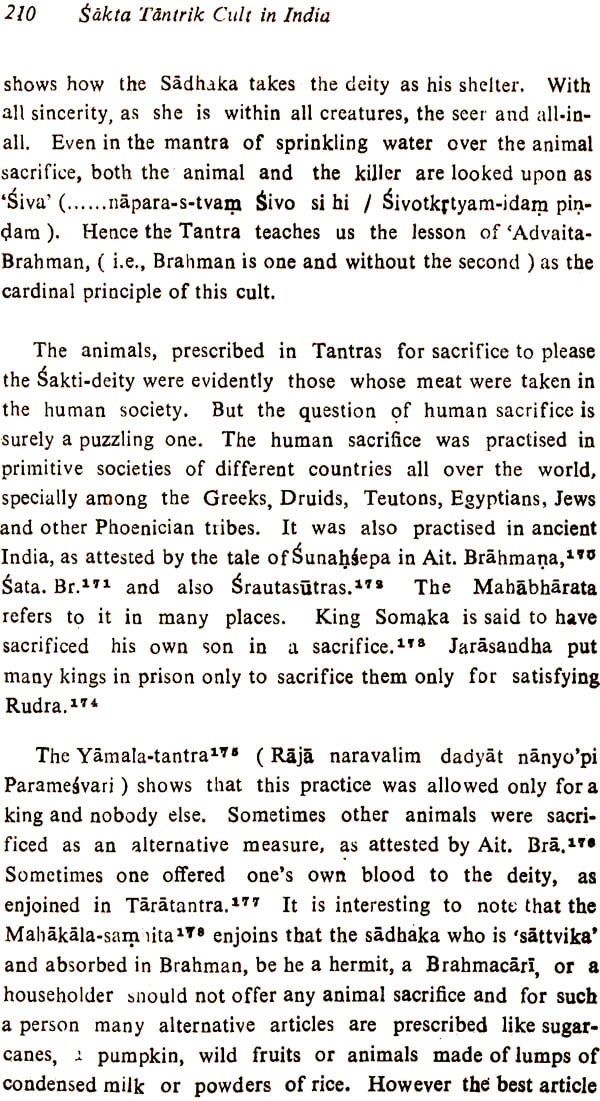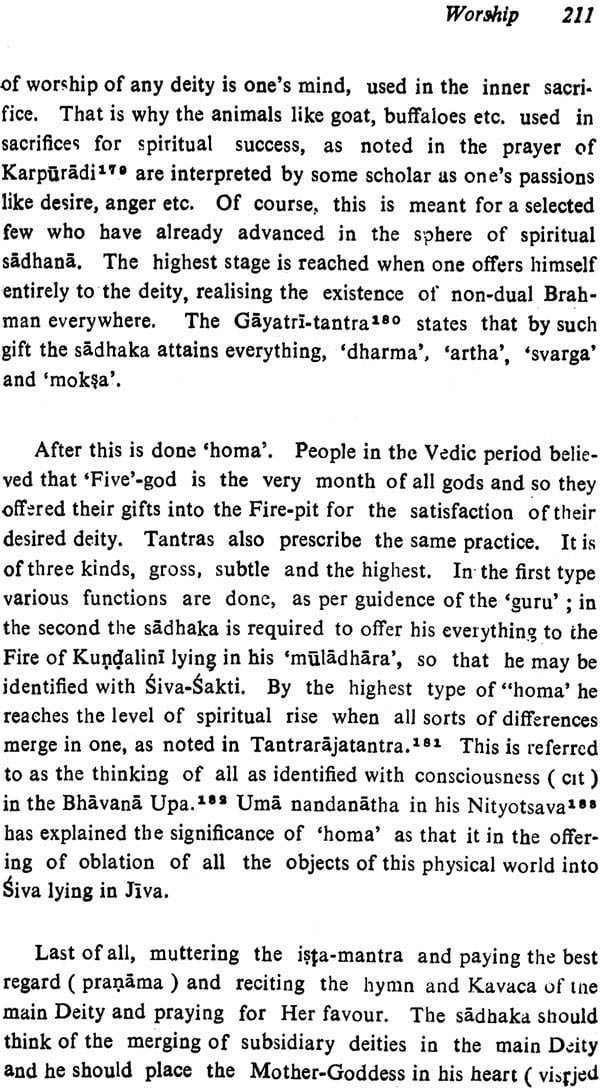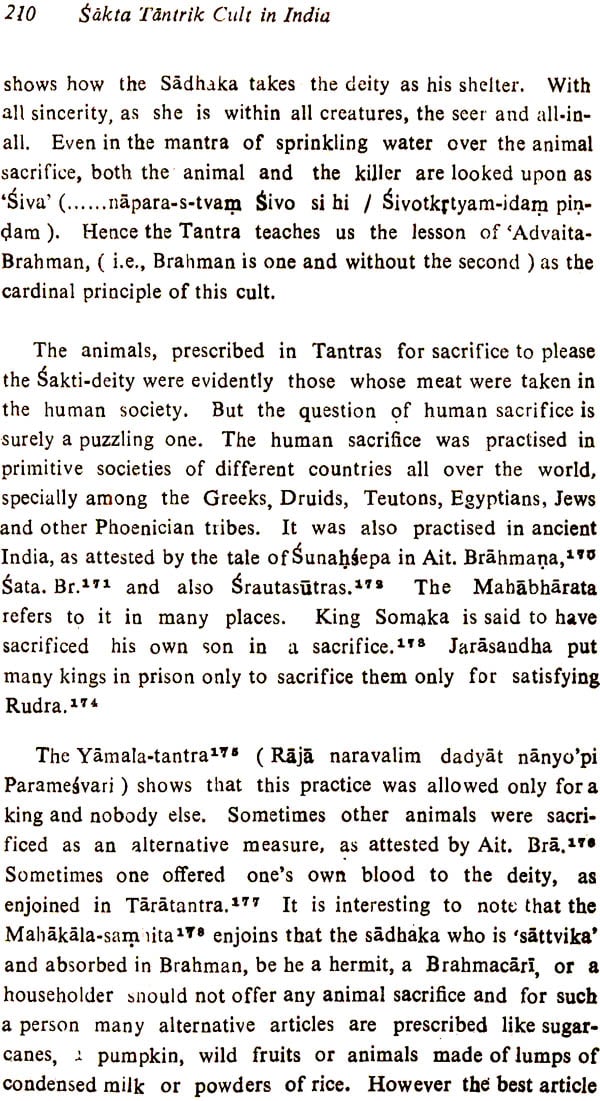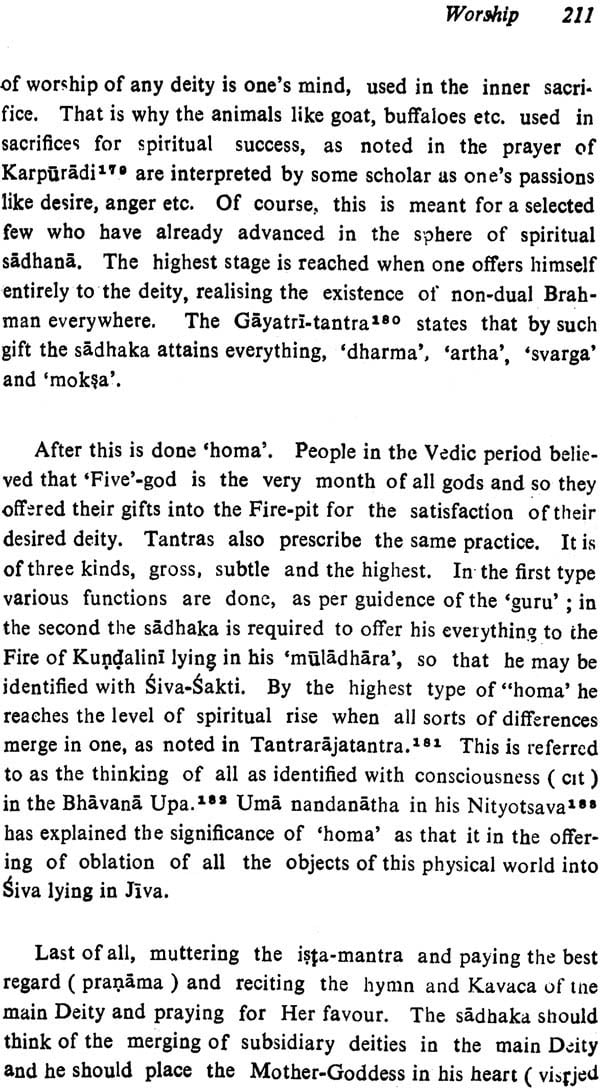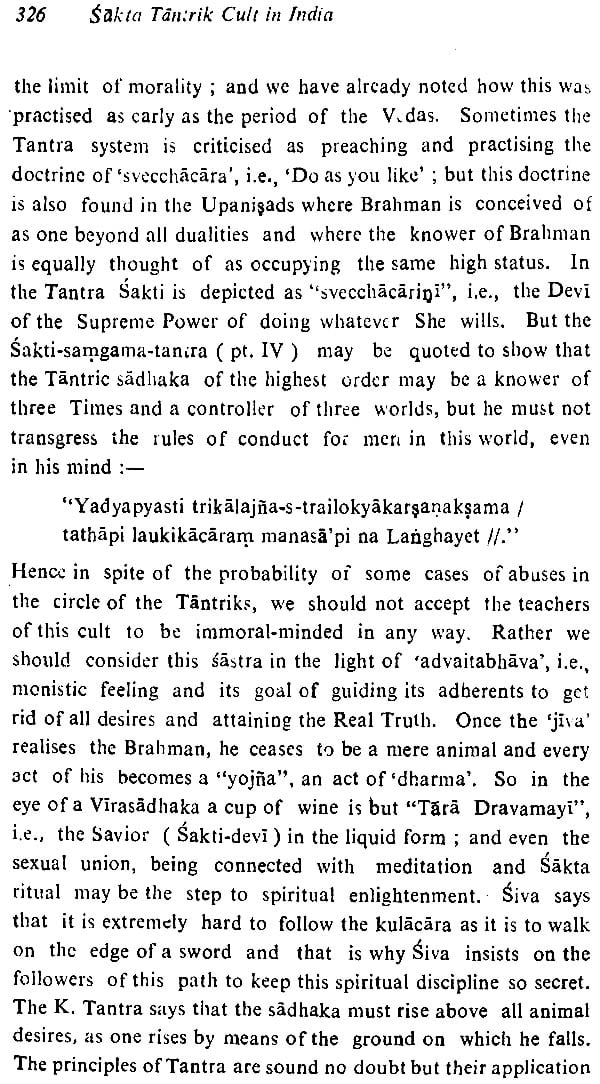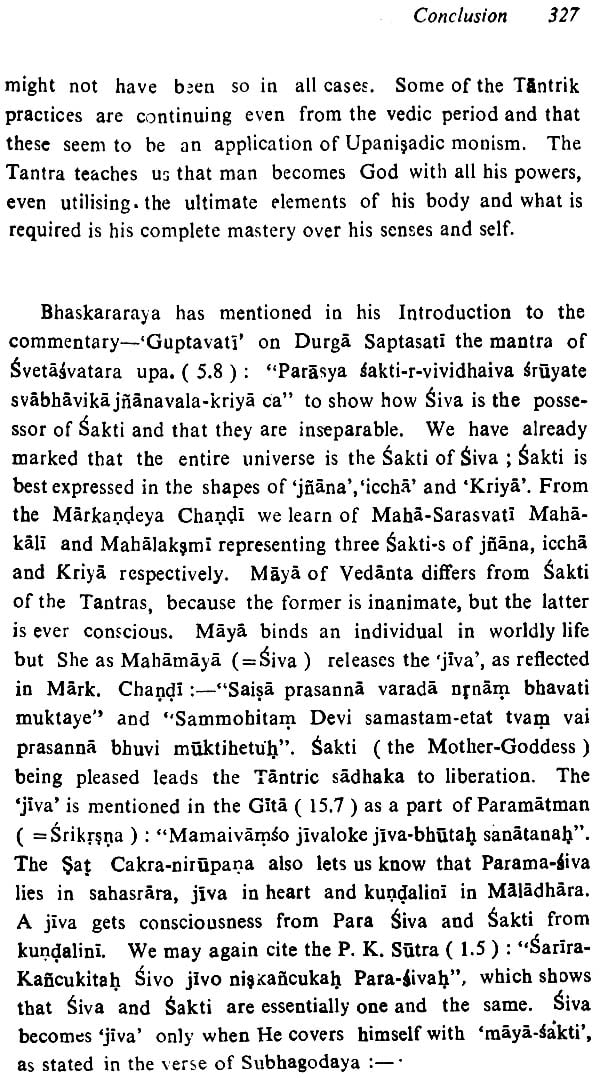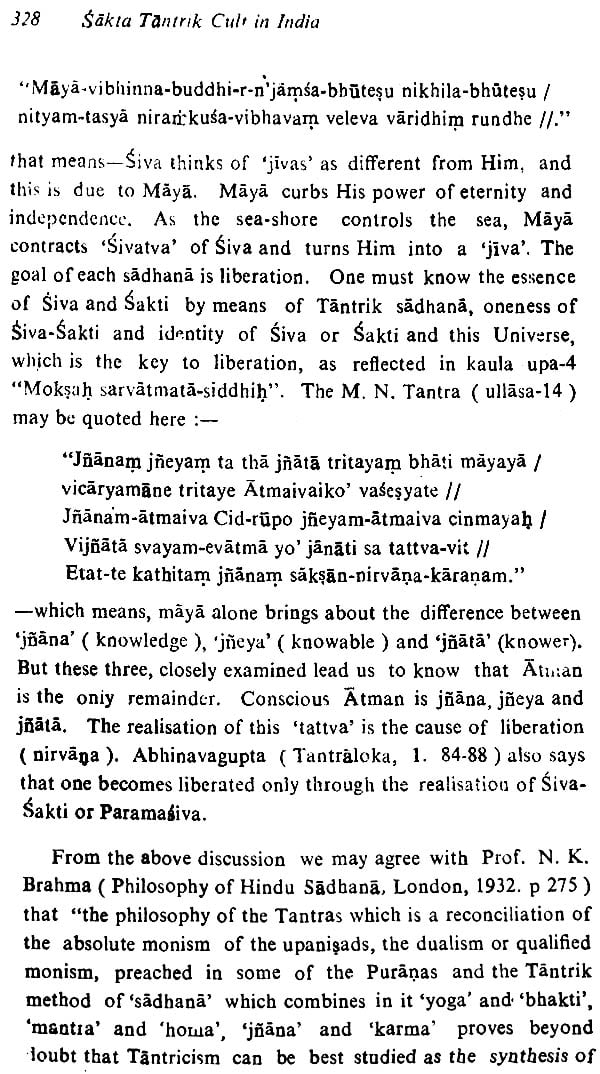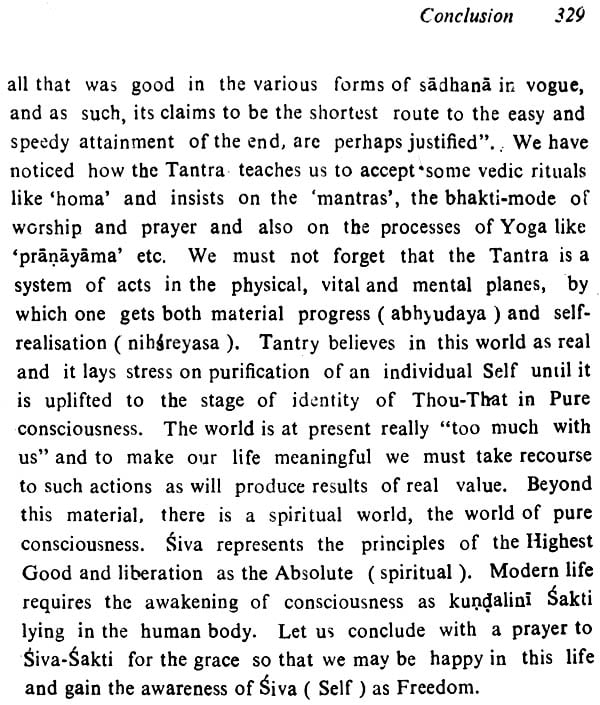
Sakta Tantrik Cult In India - An Old and Rare Book
Book Specification
| Item Code: | NAG419 |
| Author: | Haripada Chakraborti |
| Publisher: | PUNTHI PUSTAK |
| Language: | English |
| Edition: | 1996 |
| ISBN: | 8186791019 |
| Pages: | 430 (8 B/W Illustrations) |
| Cover: | Hardcover |
| Other Details | 8.5 inch X 5.5 inch |
| Weight | 490 gm |
Book Description
This book deals with different aspects of 'Sakta Tantric Cult", as presented in different chapters. It traces the history of this religion path. The special of the of the Mother Cult is that Sakti or Siva-sakti created this universe an breathed life into the living body. The principal of creation and the process of emancipation are explained in chapters on yoga and philosophy. The compulsory duties of a Tantric Sadhaka are exhibited in the chapter on worship. This book shows how the competent sadhika under the able guidence of his Guru may realise the Tantric truth and attain liberation by means of complete between himself and the Divine Mother.
Dr. Haripada Chakraborti is well known scholar. He is a double - M.A., Ph.D. and D. Litt. He served as Lecturer in some Degree Colleges of East and West Bengal and as Principal, B.C.College of Rishra. Last he joined Visva Bharati University. Even after retirement he continued his research at Visva Bharati under the U. G. C. Retired Teachers' benefi scheme for 5 years. He is the reputed author of 8 books on different topics of Indology already published and two more. Still in the press. His articles are also published in annual reports of Indian Historical conferences.
Here is an attempt to present a brief outline of "Sakta Tantrik cult in India" on the basis of the works, so far available to me. The Tantras bear many hidden treasures, so long transmitted from the Guru to his disciples and kept confidential. It is really a very difficult task to achieve success in Sakta sadhana, because mere objective knowledge of the subject is not at all sufficient to help us. The truth of this cult is to be realised under the able guidance of an efficient Guru and what is needed most is sincere sadhana to obtain the divine grace of the Supreme Mother, known as Sakti.
India is a land of saints and sages and here we have had the rise of various religious sects with wonderful success in each sphere. Now "the world is too much with us." We are fed up with the modern life-style, with practically cold war prevailing almost every where and the fear of total annihilation. Ancient Indian culture is mainly built on Vedic and Tantrik teachings. Tantra is a popular scripture, as it assures us of success both worldly and spiritual and at the same time within a shorber period of time. In spite of all difficulties India is not at all wanting in 'sadhu's, specially in Tantrik field. That is why Tara is more popular through the penances of ascetics like Vama Ksepa. Even the Western world is now more interested in this spiritual sadhana and so many scholars of both the East and the West are found to have devoted themselves to the research and realisation of the truth under- lying the Tantras.
The Guru is the best guide to unearth the mystic lessons of the Tantra-sastras and to encourage his disciple to pay his undiverted devotion to his1a-devata' and insist on the yogic practices. Hence let us read the sastras and approach the Guru for the ultimate grace of the Divine Mother.
Let me acknowledge here my indebtedness to Sir John Woodroffe, Winternitz, Dr. P. C. Bagchi, Dr. D. C. Sircar, Dr. S. Chattopadhyaya, Mm. Gopinath Kaviraj and others and specially to Dr. U. Das who had produced encyclopaedic works. I have read with much interest and profit their learned works, studied their source-materials and utilised them in some cases to enrich the value of this book. Frankly speaking, I was inspired by the works of the above mentioned scholars to write on this subject. Last of all but not of the least importance is the request of my reputed publisher Sri Sankar Kumar Bhattacharya (Punthi-Pustak of Calcutta) Who deserves my heartful thanks for the inspiration to write this treatise.
Let me pay my blessing to my son Goutam and his wife Mandira for their help in the preparation of the 'Index'. I shall deem my labour amply rewarded if this book is widely read and appreciated by the scholarly world. A paritosad vidusam na sadhu manye prayoga-Vijnanam."
Tantra means, according to Amorakosa, 'principal matter or part', siddhanta ( doctrine ) or a loom. It does not mention its use as a particular works. Hence we may infer that the Tantrasastra was not written during the period of its composition. The word 'tantra' is noted first in the V (X. 71. 9) in the sense of a loom (siri-s-tantram tanvati). It is also used in A. V. (X. 7. 72) and Tait Braha (II. 5. 5. 3). Panini (V. 2. 70) derives the word 'tantraka' from 'tantra' to denote a piece of cloth, taken recently from the loom. Apas S. S. (1. 15. 1) mentions this word in the sense of procedure containing many parts.' The Mahabhasya on Pan (IV. 2. 60) and Vartika (sarvasader-dvigosca lah) cites 'sarvatantra' and 'dvitantrah' as examples meaning 'one who has studied all the. tantras or one who has read two tantras', tantra meaning siddhanta. Saiikl}.ayaI).a S. S. uses tantra to mean "what being once done serves the purpose of many other sections." yaj. (1. 228) uses the word in the same sense (Tantram va Vaisvadevikam). The Arthasastra (XV) bears the title 'tantra-yukti' to mean the main principles of exposition of a astra. Brhaspati, Katya- yana and Bhagavata-P. use this word to mean a doctrine or "sastra. Sabara in his bhasya on Jaimini (XI. 4. 1) remarks that when any thing or act, once done, becomes useful in several matters, that is called tantra. Sankara speaks of Sankhya- darsana as Sankhya-tantra and of 'purvamimamsa as prathama- tantra.
The word 'Tantra' is derived from the root 'tan' with the suffix stran' in the sense that knowledge is extended by it. The knowledge which saves us is obviously spiritual. So Tantra may be taken as a religious scripture. The Kamika- gama says that the Tantra is a sastra which expands our great knowledge of Tattva and Mantra and which saves us. (Tanoti vipulan-arthan tattava-mantra-samanvitan I tranam ca kurute yasmat tantram-ityabhidhiyate). The Kularnava tantra says that Tantra is called Aguma, because it teaches us practices leading to the realisation of divine life and also principles, rich in significance. (Acara-kathanad dirya-gati-prapti- nidanatah I mahartha-tattva-kathanad-agamah kathitah priya II). In Rudrayamala we find that it comes from the mouth of Siva, goes into that of Girija and is approved of by Vasudeva and it is called 'agama'. (Agatam Siva-vaktrebhyo gutam ca Girija mukhe I. matam Sri- Vasudevasya tasmd- aguma ucyate II). It is also called 'Nigama', because it comes out of the mouth of Girija, enters into ears of Siva and is approved of by Vasudeva, as found in 'Agama-dvaita-nirnaya- vacana'. There is tittle difference between Aguma and Nigama. Other than the fact that Siva and Parvati are the speakers in Aguma and Nigama respectively. From the Brahmayamala (Ch. 39-Srotonirnaya), preserved in Mss, Nepal Durbar Library we know of classification of Tantras into three 'srotas' (currents or traditions) 'daksina', 'vama' and 'madhyama'. These three stress on 'sattva', 'raja' and 'tamas' respectively. The 'daksina srota is pure, the middle one is impure and the left is mixed. The first two mention various tantras like yoginijala, yogini-hrdaya, vijaya, nihsvasa, vatula and others.
Agamas are divided into three types, Sakta, Saiva, Vaisnava or Pancaratra on the basis of the istadevata'-Sakti, Siva and Visnu. The Vaisnava agama is also called Sattvata- Tantra, as noted in Srimad-Bhagavata (tenoktam sattvatam tantram ). The Saktisamgama Tantra mentions a long list of Agamas showing thereby the use of different 'agam a-s in various sects. Agama may be broadly divided into two veda based and non-vedic, as reflected in kurma-purana which mentions non-vedic ones like nakula, Vama, Bhairava, Pancaratra, Pasupata and others. The Pasupata agama is held as non-vedic, but the kurma-purana appreciates it as the most sacred and as the cream of the vedas leading to emancipation. (guhyad guhyatamam suksam veda-saram vimuktaya). The Pancaratras like Narada are again accepted in the digests of Smrtis and hence they may not be non-vedic. Elsewhere we hear of three divisions of 'agama's viz, tantra, yamala and damara of 'sattva', 'vajah' and 'tamas' respectively. Varahi tantra defines yamala as a Tantra which teaches us lesson, on creation, astrology, daily duties, krama, sutra, varnas (castes) and 'yugadharma'. From the manuscript of Brahmayamala (11th cent. A. D.), preserved in the Nepal Durbar Library we learn of eight, kinds of 'yamala-s, all uttered by Bhairavas, viz, Svacchanda, Krodha, Unmatta, Ugra, Kapali, Jhankara, Sekhara and Vijaya. Six types of damara'-s are mentioned in varahi-tantra.
| Chapter I | Introduction | 1-21 |
| Chapter II | Date of tantras | 23-41 |
| Chapter III | The cult of the mother Goddess | 43-63 |
| Chapter IV | Tantrik Deities | 65-93 |
| Chapter V | Sakta pithas | 95-125 |
| Chapter VI | Sakti sadhana | 127-146 |
| Chapter VII | Initiation and gturuvada | 147-164 |
| Chapter VIII | Worship | 165-217 |
| Chapter IX | Panca-tattva | 219-249 |
| Chapter X | Sava-sadhana | 251-257 |
| Chapter XI | Yoga | 259-282 |
| Chapter XII | Philosophy of the sakta tantras | 283-321 |
| Chapter XIII | Conclusion | 323-329 |
| Appendices | 331-367 | |
| A-Mantras in Tantras | 333-343 | |
| B-Source of magical rites of the tantras | 345-351 | |
| C-Candi in Puranas | 353-367 | |
| Bibliography | 369-375 | |
| Index | 377-387 | |
| Plates |
